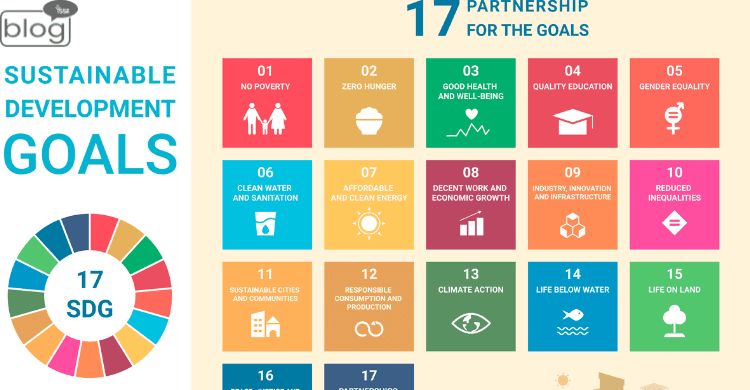Just picture a future where every person can get clean drinking water, only the very best education is available and the surroundings are very friendly; a future where nobody ever goes to bed hungry, and there is never poverty or abuse of any nature. Doesn’t it sound too good to be true? The Sustainable Development Goals (SDGs) are actual methods meant to ensure that by 2030, everybody can have such a quality of life, not just simple wishes.
But what do the SDGs mean?
Consider the 17 interconnected goals that all UN member states agreed upon in 2015. These goals aim to solve some of the world’s biggest problems, like climate change, poor health, fair rights for women, and economic growth.
The SDGs are attractive because of the following:
They’re big goals that can be reached: Even though they are big, they come with clear steps and goals to achieve. This lets us keep track of our progress and celebrate big steps along the way.
They include everyone: To reach the SDGs, everyone must work together, from people and businesses to governments and international groups. It takes everyone working together and coming up with new ideas.
They are constantly changing: The SDGs are not a complete set of rules. They are looked at and changed often to keep up with the wants of our world.
How can you join in then?
The good news is that you don’t have to be a superhero to help reach the SDGs. You can do these easy things:
Learn something: Find out how the different goals fit together. Make smart decisions. Businesses and groups that are in line with the SDGs should be supported. For change to happen, you need to speak out about the things that bother you and push others to do the same. Reduce your impact on the earth and change how you consume to live sustainably.
Through their work with the SDGs, students can change the future. These goals aim to create a global attitude and encourage empathy by tackling global problems. Students can take action, learn how to be leaders and prepare for a healthy future by participating. Students can help make the world a better place one step at a time by learning about the SDGs and taking action.
The SDGs are for everyone, no matter what age, but how people do them changes as time passes. Stories and games can help young kids learn basic ideas. Kids learn to see the bigger picture in middle childhood and do simple things. Teenagers can learn more, pursue their hobbies, and fight for change. The important thing is to find ways for people of all ages to get involved and help make the future better for everyone.
Future-Shaping Students The Sustainable Development Goals (SDGs) make students not only the future but also people who are changing it right now. They can use the Sustainable Development Goals (SDGs) to deal with problems worldwide and improve the world through collective action.
Students can develop a global mindset: they are exposed to different points of view, which helps them understand how global problems are linked and demonstrate empathy. Because of this critical thought, people can become good citizens.
Develop a feeling of control: Take steps to reach the SDGs. Students can express their interests in the real world and feel inspired to make a difference, no matter how small. Participating in projects helps them learn how to lead and work with others.
Develop a long-lasting future: The SDGs show how environmental issues, social justice, and economic growth are all connected. As a result, students are better prepared to deal with problems in the future and support longevity.
Supporting the SDGs helps students learn valuable things that will prepare them to be responsible leaders in a constantly changing world. Promoting exploration, discovering passions, and action among students makes them involved in making the future better for everyone.
Remember that everything you do can help improve the future, no matter how small. Allow us to work together to make the SDGs a real plan. If we work together, we can make the world last, fair, and wealthy for everyone.
To read more blogs like this, click here.
Writer :
Zakia Sultana
Intern,
Content Writing Department.
YSSE

